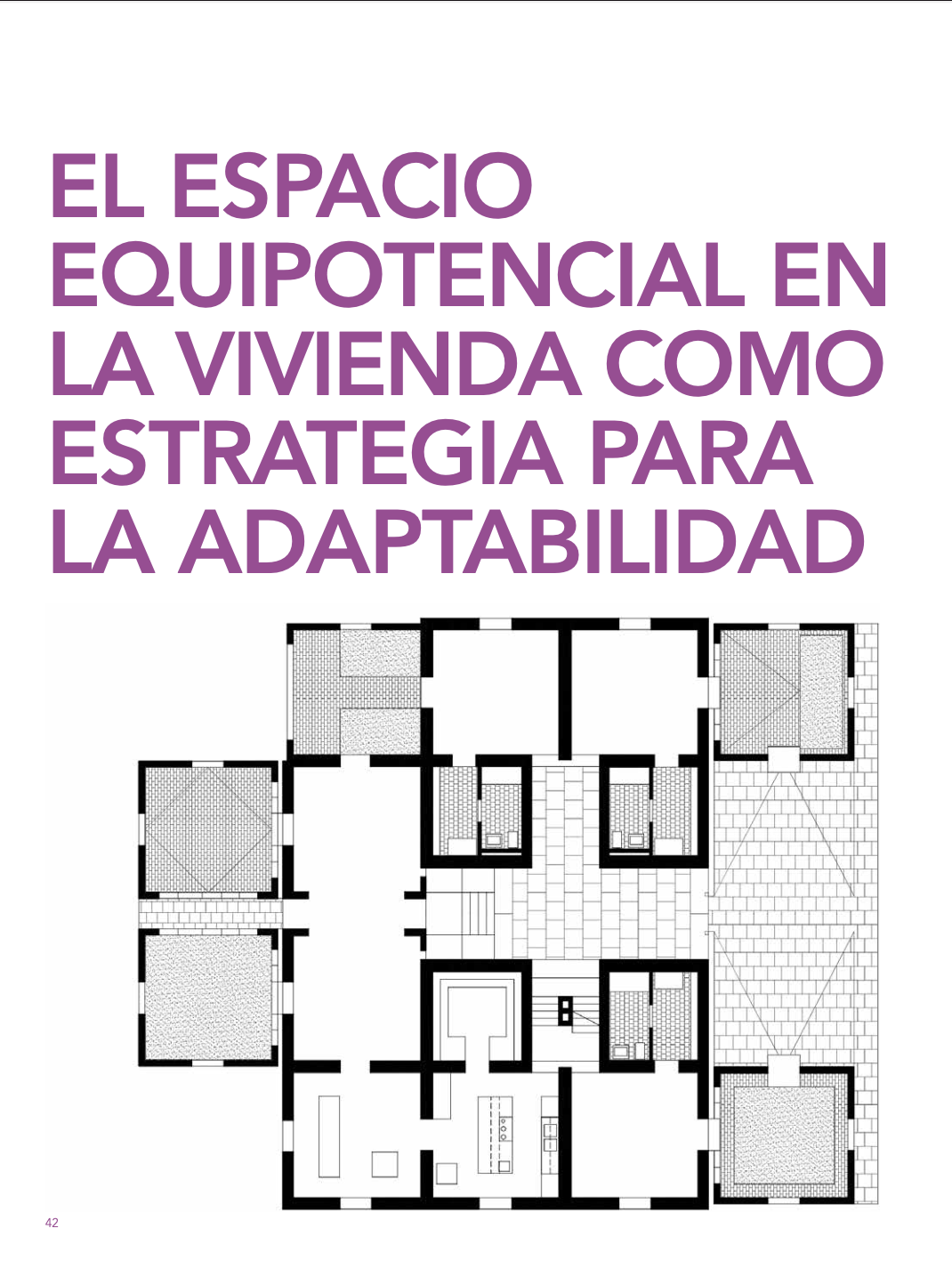EL ESPACIO EQUIPOTENCIAL EN LA VIVIENDA COMO ESTRATEGIA PARA LA ADAPTABILIDAD
Barra lateral del artículo

Palabras clave:
Contenido principal del artículo
Resumen
La arquitectura necesita dar respuesta, en el ambito domestico, al continuo y vertiginoso cambio en las necesidades y en las formas de vida de la sociedad contemporanea. Por ello, proponemos explorar el con- cepto de “adaptabilidad” en la vivienda a partir del estudio de una serie de proyectos en los que encontra- mos una disposicion concreta de las estancias que denominamos “espacio equipotencial” o “en damero”. Esta configuracion favorece la generacion de una logica abierta de relacion entre espacios y actu como un mecanismo que dispone a la vivienda para la adaptabilidad, permitiendo concebirla como un campo de juego abierto, electivo, dinamico y combinatorio.
Detalles del artículo
Materia Arquitectura proporciona acceso inmediato y gratuito a todos los contenidos de esta edición electrónica, publicada simultáneamente con la edición impresa. Materia Arquitectura no cobra honorarios a los autores por ningún concepto.
Todos los contenidos de esta edición electrónica se distribuyen bajo licencia Creative Commons de “Atribución-Copartirigual 4.0 Internacional” (CC-BY-SA).
La licencia Creative Commons permite el acceso libre e inmediato al contenido y permite que cualquier usuario lea, descargue, copie, distribuya, imprima, busque o genere enlaces a los textos completos de los artículos, permitiendo también que estos puedan ser rastreados para indexarlos, pasarlos como datos a software o usarlos para cualquier otro propósito legal. Asimismo, la licencia otorga derechos de uso a quienes a su vez utilicen una licencia abierta (Creative Commons o equivalente).
Los derechos de los textos y las imágenes publicadas pertenecen a sus autores, quienes otorgan a Materia Arquitectura la licencia para su uso. La gestión de los permisos y la autorización de publicación de las imágenes (o de cualquier material) que contenga derechos de autor y sus consecuentes derechos de reproducción en esta publicación es de exclusiva responsabilidad de los autores de los artículos.
Toda vez que mencionen su origen, los autores son libres de distribuir sus artículos por otros medios. Cualquier reproducción total o parcial del material deberá citar su procedencia.
Descargas
Citas
COHEN, J.-L. (2005). Urban Textures: Yves Lion. Basilea, Suiza: Birkhäuser.
DELGADO, M. (1999). El animal público: hacia una antropología de los espacios urbanos. Barcelona, España: Anagrama.
HABRAKEN, N. J. (1972). Supports: An Alternative to Mass Housing. Londres, Inglaterra: Architectural Press.
ITO, T. (2000). Paisaje arquitectónico de una ciudad envuelta en una película de plástico transparente. En J. M. Torres Nadal (Ed.), Escritos (pp. 113–130). Murcia, España: Colegio Oficial de Aparejadores y Arquitectos Técnicos.
JUÁREZ, A. (2006). El universo imaginario de Louis I. Kahn. Barcelona, España: Caja de Arquitectos.
LIGTELIJN, V. (1999). Aldo van Eyck. Works. Basilea, Suiza: Birkhäuser.
ROWE, C., & SLUTZKY, R. (1963). Transparency. Perspecta, 8, 45–54.
SAITO, Y. (2007). Louis I. Kahn: Houses. Tokio, Japón: Toto.
SANAA, (2004). SANAA (Sejima + Nishizawa) 1998-2004. El Croquis, (121-122). SCHNEIDER, T., & TILL, J. (2007). Flexible housing. Oxford, Inglaterra: Architectural Press.
Artículos más leídos del mismo autor/a
- José Luis Bezos Alonso, Equipotential Space in Housing as a Strategy for Adaptability , Materia Arquitectura: Núm. 18 (2018): Materia Arquitectura 18 (Diciembre/December 2018)